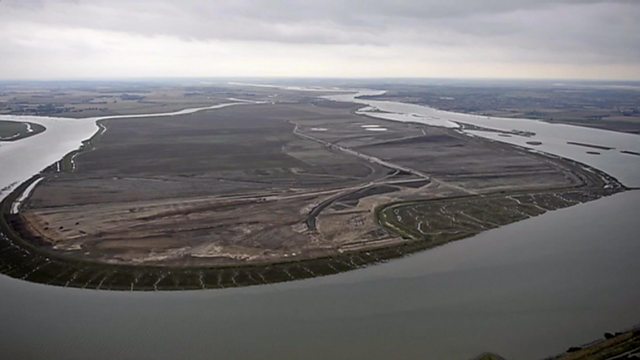
Return to Europe's largest man made nature reserve
Inside Out returns to Wallasea Island to see if if the birds are taking to their new home.
Wallasea Island in Essex is an area of International importance for wildlife.
Left alone, it would be lost to the sea one day, a casualty of climate change and coastal erosion.
Ten years ago the RSPB took the island over and set out to make it
the biggest man made nature reserve in Europe. The vision was to create a new
island, a saltmarsh for 50,000 visiting birds.
Saving and restoring Wallasea was made possible because of Europe's biggest engineering project London CrossRail. Millions of tons of earth excavated from beneath the capital had to be disposed of, and the RSPB had just the place.
They used the earth to bring part of the island to a metre and half above sea level. Then it was moulded to create a new shape to the island, new sea walls, and a mosaic of mudflats and lagoons.
Once this was done, the sea walls were breached and the high tide came in. This timelapse RSPB footage shows how water has been controlled to give wildlife a perfect home.
As the floodgates opened, the map of the UK was changed forever as Wallasea was brought back to how it was 400 years ago.
Inside Out has been following the story from the start, and next week the programme returns to the island to see if the early birds are taking to their new home.
Duration:
This clip is from
More clips from Inside Out East
-
![]()
'More women from minority backgrounds should cycle'—10/02/2020
Duration: 01:33
-
![]()
Sandscaping set to hold back the tide—09/09/2019
Duration: 01:51
-
![]()
Tackling the virus causing deafness in children—02/09/2019
Duration: 01:44
-
![]()
Bike thefts rise as police 'do nothing'—09/09/2019
Duration: 01:18





